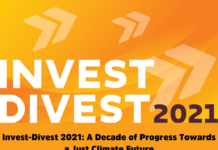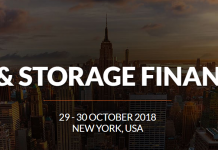The following interview is provided to us by Guinness Atkinson Funds, a Featured Company Advertiser at Alt Energy Stocks. Fund managers Tim Guinness, Edward Guinness and Matthew Page discuss the Guinness Atkinson Alternative Energy Fund in a question and answer forum covering topics from the alternative energy market to management style and methodology for selecting stocks and managing the portfolio. To view the complete Q&A, please see below. – Q. Tim, your experience in managing energy comes from your many years managing more conventional energy investments. What led you to alternative energy? A. I have been running a conventional energy fund since 1998 and have been following alternative energy stocks as a sub sector within the energy universe since then. Not that I owned much in it, as there was always such good value in the conventional energy sector. I did however buy Gamesa* (the wind company) in that fund shortly after it IPO’d in late 2000 but I sold it quite soon afterwards as I came to conclude its valuation along with all other stocks in the sector to be too high. As the oil price started to rise in 2004 through 2005, valuations and the potential growth of the market started to look better. The debate around climate change was intensifying and energy security was pressing on the minds of politicians. As a result the outlook for alternative energy looked more positive while the bear market that alternative energy had experienced in 2002 and from which it was only beginning to recover made it look like a much better investment proposition. Initially the best value continued to be in the conventional energy space but by May 2005 conventional oil & gas had moved up sharply and alternative stocks began to catch my interest again. I now regard them as two different but complementary ways of playing the ever higher energy price scenarios I believe we are facing as we look forward 10 – 20 years. *3.15% net assets in GAAEX as of September 30, 2007. Fund holdings and sector allocations are subject to change at any time and are not recommendations to buy or sell any security. Q. Edward , at the moment most forms of alternative energy are not economically viable without government incentives. How long will it be until alternative energy can stand on its own feet and what is going to get us there? A. Some forms of alternative energy are economical now. Electricity production from hydro and geothermal sources has been tapped for many years and the technology is fairly mature. Wind power does benefit from subsidies but in specific locations with strong and predictable winds can be economic now. Subsidies for wind projects may not be necessary in 3 – 5 years time. The solar industry is dependent on subsidies and will require subsidies for longer but some industry analysts predict electricity from solar will be at parity with the grid in 5 – 7 years time in remoter locations with good isolation. The subsidies in place allow the industry to grow and technologies to be developed and mature and drive costs down. In predicting parity of course the price level for oil and gas has to be factored in. The higher conventional energy prices rise the sooner parity can be achieved. Q. Matthew, what percentage of world energy production is from alternative energy and can alternative energy overtake more conventional energy sources? A. If you exclude hydro, alternative energy makes up around 2.5% of world electricity production capacity of which wind is about 1% and solar 0.1% and various forms of biomass and geothermal make up most of the balance. In the medium term (~25 years) we could see wind and solar each making up 15% and 5% respectively of world electricity production increases of 15X and 50X respectively. Eventually we believe cheap fossil fuels will run out and alternative energy sources should be cheaper sources of electricity and should therefore become the more conventional source of energy. Q. Tim, in the 1970s alternative energy was the next big thing. And then we didn’t hear much about it for over 30 years. Is it really the next big thing? A. Consumption of oil has increased 50% since the 1970s and looks set to continue to increase driven largely by the rapid development of the economies of India and China. Cheap oil is becoming harder to find; existing basins are maturing and exploration has had to go further off shore and into deeper waters making exploration and production more expensive. We see a floor in the oil price at $50 and we could easily see it go over $100 in the next five years. If oil, gas and coal prices steadily move higher as we predict and alternative energy technologies continue to develop and become cheaper, there is significant potential growth for the industry for a considerable period of time as the baton of electricity generation is passed from fossil fuels to alternatives. The other significant difference is that a number of the areas of alternative energy – particularly hydro, geothermal, wind, solar and even biofuels – have companies that are already generating revenues and profits. Over 84% of our portfolio is invested in stocks which we anticipate should have positive earnings for 2007. This is a notable change from where the industry was in the 1970s. Q. Edward, what criteria do you have for inclusion in the Fund? What defines an alternative energy stock? A. We take a pure-play approach whereby we have a preference for stocks with 50% of revenues or profits should come from alternative energy sources. This excludes us from buying stocks such as General Electric despite the fact that they are one of the largest manufacturers of wind turbines. We define alternative energy to include all forms of energy that are not derived from fossil fuels. We also include companies that are working on technologies to make processes more energy efficient and companies that can generate carbon credits as we think that demand side improvements in the “energy balance” should play a major part in the move beyond our declining fossil fuel reserves. . We also mainly invest in companies with market capitalizations over $100 million. Q. Matthew, the Guinness Atkinson Alternative Energy Fund is global in nature and only approximately 20% of the Fund is invested in the U.S. Is the U.S. behind the curve in alternative energy? A. Alternative energy is most developed in countries where government subsidies have been in place for some time. Germany put in place strong incentives in the early part of this decade to encourage demand for solar modules,to encourage installations of wind farms and to support the biofuels industry. Companies in countries with a more progressive alternative energy policy framework therefore developed technology and intellectual property at an earlier state. Other European countries such as Denmark, Spain and Portugal also embraced alternative energy therefore companies tend to be more mature in Europe. However the potential for growth in the U.S. is greater, and once a longer term framework has been put in place, we would expect the U.S. to catch up fast. Q. Tim, how tied to the price of oil are the alternative energy stocks? A. Historically the price of alternative energy stocks and the oil price have been fairly tightly correlated. If the oil prices were to fall back to $30 then these stocks could be hit hard. However, looking forward we see a momentum behind the alternative energy industry and the stocks could continue to perform even if the price of oil remains flat. If the oil price continues to rise as we expect then even better. Q. Edward, we see the Alternative Energy Fund has a wide range of market caps. How would you characterize the Fund, both in terms of market cap and style? A. Small to mid cap. Growth at a
reasonable value. Q. Tim, Edward & Matthew, tell us a bit about your management style and methodology for selecting stocks and managing the portfolio. A. The fund is managed by a team of three fund managers. Tim Guinness is the Lead Manager and Edward Guinness and Matthew Page are Co-Managers. We see a lot of companies as they come through London as well as making company visits and attending conferences around the world. We take a 50/50 top-down/bottom-up approach. We look to identify the sub sectors within the space which we see as having the greatest potential for growth and strong returns. Recently we have preferred wind and solar over fuel cells and biofuels but this is constantly under review. We then screen the universe of 200 stocks we have identified to try and identify good companies that are cheap where sentiment towards them is improving and stock price action is positive. One tool we use is to screen by value, earnings momentum, economic returns vs peers, and a technical indicator. This identifies stocks for us to then do further in depth analysis. We run the portfolio on the basis of units, half units and research positions. Units are high conviction, liquid, large market capitalization stocks and will represent around 3% of NAV. Half units are stocks which either are liquid but our conviction is less strong or our conviction is high but the liquidity of the stock restricts us from buying more. Research positions tend to be smaller less liquid stocks which may not be profitable but are fairly unique and have potential for significant growth given a technological breakthrough or significant contract. Research positions in aggregate account for less than 10% of the NAV. The information provided herein represents the opinions of Tim Guinness, Edward Guinness, and/or Matthew Page and is not intended to be a forecast of future events, a guarantee of future results, nor investment advice. The fund’s investment objectives, risks, charges and expenses must be considered carefully before investing. The prospectus contains this and other important information about the investment company, and it may be obtained by calling 800-915-6566 or by visiting www.gafunds.com. Read it carefully before investing. The Fund invests in foreign securities which will involve greater volatility and political, economic and currency risks and difference in accounting methods. The Fund is non-diversified meaning its assets may be concentrated in fewer individual holdings than diversified funds. Therefore, the Fund is more exposed to individual stock volatility than diversified funds. The Fund also invests in smaller companies, which will involve additional risks such as limited liquidity and greater volatility. Distributed by Quasar Distributors, LLC (10/07).





